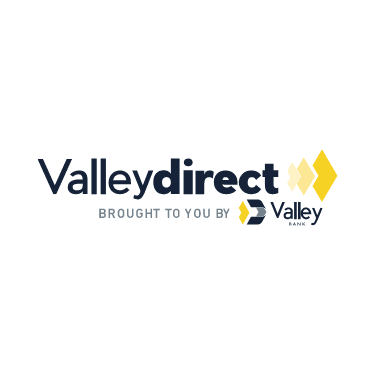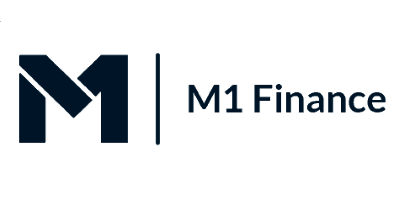Interest rates on fixed-income investments have been admittedly low for most of the last ten years. But they’ve come up some in the last couple of years, and now there are many opportunities to earn enough interest or dividend income to at least keep up with inflation.
That will enable you to protect the income-generating side of your portfolio, both from market risk and inflation.
While you might think of fixed-income investments as being safe, that typically applies only to the ones that have the lowest returns. A better idea may be to build a portfolio that includes both completely safe investments, as well as low-risk, high-return investments.
That will keep your portfolio relatively safe, while you earn higher returns than you would on investing entirely in completely safe investments.
Let’s look at a combination of both completely safe investments, as well as low-risk, high-reward investments. And for what it’s worth truly low-risk, high-yield investments may be something of a myth, at least depending on your definition of “high yield.” That’s because high yields typically come with high risks.
9 Best Low-Risk Investments
Here are the best low-risk investments for 2025:
- High-Yield Savings Account
- High-Yield Money Market Account
- No Penalty CDs
- US Treasury Securities
- Municipal Bonds
- Corporate Bonds
- Dividend Paying Stocks
- Real Estate Crowdfunding
- Real Estate Investment Trusts (REITs)
1. High-Yield Savings Accounts
High-yield savings accounts are currently paying something around 2% per year. These rates are primarily available at online banks, rather than local brick-and-mortar banks. The reason is simple – online banks don’t have networks of bank branches, and the many employees needed to staff them.
This provides the banks with lower operating expenses, enabling them to pay higher returns than local banks.
| Product | APY | Min Deposit |
|---|---|---|
| Varo Bank Savings Account |
up to 5.00% APY | $0 |
| LendingClub Bank High-Yield Savings |
up to 4.40% APY | $100 |
| Valley Bank High Yield Savings |
4.39% APY | $0 |
| NexBank High Yield Savings |
4.31% APY | $1 |
| EverBank Everbank Performance℠ Savings |
4.30% APY | $25 |
2. High-Yield Money Markets
Money market accounts are very similar to savings accounts, though they typically have higher minimum balance requirements, and may also come with a debit card allowing easier access to your funds. But in all other respects, they work like savings accounts.
Generally speaking, an online bank will be your best source for high rates. And very typically, the same banks that pay high rates on savings accounts will do the same with money markets.
| Product | APY | Min Deposit |
|---|---|---|
| First Internet Bank Money Market Savings |
up to 4.42% APY | $100 |
| First Internet Bank Money Market Savings |
up to 4.42% APY | $100 |
| CFG Community Bank Money Market |
4.32% APY | $1,000 |
| Vio Bank Cornerstone Money Market Account |
4.31% APY | $100 |
| Quontic Bank Money Market Account |
4.25% APY | $100 |
3. Certificates of Deposit (CDs)
A Certificate of Deposit (CD) is essentially an investment contract with a bank. In exchange for a certain amount of money, the bank promises to repay you the full amount of your investment at maturity, as well as a fixed rate of interest. Should the bank fail, the CDs are guaranteed by the FDIC, making them totally safe.
CDs can run in terms of anywhere from 30 days to five years. They can be purchased in denominations of as little as $500, though some banks have much higher minimum requirements.
If you redeem your CDs before maturity, you’ll be assessed a prepayment penalty that will require you to forfeit some or all the interest paid on the CD up to the point of redemption.
However, CDs are an excellent investment if you believe interest rates are headed lower. It gives you an opportunity to lock in a guaranteed rate of return for the term of the certificate.
| Product | APY | Min Deposit |
|---|---|---|
| First Internet Bank 1 Year CD | 4.40% APY | $1,000 |
| Sallie Mae Bank 1 Year CD | 4.40% APY | $2,500 |
| America First Credit Union 1 Year CD | 4.35% APY | $500 |
| CCBank 1 Year CD | 4.35% APY | $1,000 |
| Navy Federal Credit Union 1 Year CD | 4.30% APY | $50 |
4. US Treasury Securities
US Treasury securities are considered the safest of all investments because the US government fully guarantees both the interest and principal.
They can be purchased in denominations of as little as $25, and have terms of anywhere from one month to 30 years. The longer-term securities do carry significant interest rate risk. If interest rates rise, the value of the bonds will decline. However, if you hold the securities until maturity, your principal investment will be fully returned.
If you’re looking for complete security, you should select shorter-term securities, those ranging from one month to one year. These are referred to as US Treasury Bills, and they currently carry interest rates ranging from 1.60% to 1.76%.
Current Yields on US Treasuries are as follows (as of 11/9/2022):
US Treasury securities can be purchased directly through the Treasury’s investment portal, Treasury Direct. There, you can buy, hold, and sell your securities. There are no fees for the service.
You can also purchase US Treasury securities through various brokerage firms. But you should be aware that you will typically be charged a small fee if you do.
5. Municipal Bonds
Municipal bonds are bonds issued by state and local governments. They can be available in terms of 20 years or more, which means that you carry the risk of loss of principal should interest rates rise.
But you can invest in short- to intermediate-term municipal bonds through a municipal bond ETF. For example, the fund may purchase 20-year municipal bonds due to mature within the next one to five years. That will provide you with the expected interest rate return, with minimal risk of loss of principal.
The significant advantage of municipal bonds is that the interest they pay is exempt from federal income tax. It’s also exempt from state income tax if they are issued in the same state where you reside. If you’re in a combined 25% marginal tax rate for federal and state income taxes, a municipal bond paying 3% will have the equivalent yield of 4%.
Municipal bonds, like corporate bonds, dividend-paying stocks, and real estate investment trusts, can be purchased, held, and sold through popular investment brokerage firms.
6. Corporate Bonds
Corporate bonds are issued by publicly traded corporations. They typically trade in denominations of $1,000 and can be bought, held, and sold through investment brokers, including those listed above under Municipal Bonds.
They pay higher interest rates than totally safe investments since there is an element of risk. And since they typically run in terms of 20 years, there’s always the risk that rising interest rates will lower the market value of the bonds. However, like US Treasury securities, they will pay your full principal investment at the time of maturity.
Since diversification is important even with corporate bonds, your best strategy may be to invest in them through ETFs that specialize in corporate bonds. Not only will that enable you to diversify across many different bond issues with a small investment, but it will also allow you to choose the maturity terms you feel most comfortable with.
7. Dividend-Paying Stocks
Dividend-paying stocks are so named because a significant amount of the company profits are paid out to their shareholders in the form of dividends. On the other hand, pure growth stocks invest most or all the profits back into the business, and pay little or nothing in the way of dividends.
Dividend-paying stocks have an advantage because not only do they pay steady income, but they also hold the possibility of capital appreciation as well. You must be careful, however, when it comes to the highest-yielding stocks. The yields may be high because the stock price has been battered. And if it has, there’s a high likelihood the dividend will be cut.
The best choice for dividend-paying stocks is in what is known as dividend aristocrats. These are not only stocks known to pay high dividends, but they must also meet specific criteria. For example, they must generally be large companies with a strong history of income growth and a steady pattern of increasing their dividend payouts.
The website Sure Dividend provides a list of 57 stocks that qualify as dividend aristocrats.
These include well-known companies, such as Abbott Labs, AFLAC, Colgate-Palmolive, Chevron, General Dynamics, Johnson & Johnson, Coca-Cola, Lowes, McDonald’s, Pepsi, Procter & Gamble, AT&T, Target, Walgreens, Walmart, and Exxon-Mobil. Some of the stocks on the list have dividend yields in excess of 5%.
Dividend-paying stocks can be purchased through investment brokers, including those listed above under Municipal Bonds.
8. Real Estate Crowdfunding
Real Estate Crowdfunding is a new way to invest in a variety of types of real estate, from single-family homes to office buildings. Most crowdfunding companies pool the money from investors in exchange for shares of a project or collection of projects.
All you have to do is invest, either by funding a project or being an online landlord. There are no calls at 2 am to fix a leak. You get all the benefits without having to maintain a property or make repairs.
While there’s always a risk in any investment, the best real estate crowdfunding companies invest in historically low-risk types of investments, like family homes in nice neighborhoods.
They also only invest in cash flow-positive properties in good neighborhoods. This investing strategy reduces risks and creates a more predictable return, often between 8-13%, making crowdfunded real estate one of the best low-risk high-return investments.
If you’re an accredited investor with a higher net worth, check out CrowdStreet, which requires a $10,000 minimum investment but allows you to invest directly into properties of your choosing (versus the “beginner”, “long term growth” etc. portfolios that Fundrise offers), and better yet, CrowdStreet charges nothing in fees.
9. Real Estate Investment Trusts (REITs)
REITs are something like mutual funds for real estate. They typically hold commercial real estate, such as large apartment complexes, office buildings, retail shopping centers, healthcare properties, student housing, and even warehouses and industrial property. DiversyFund invests in multi-family properties that need a bit of repair work, like a new roof or bathroom.
Each fund holds a large number of properties, which may be similar in type, but geographically diversified across the country. REITs typically offer a combination of both regular dividend income, as well as capital appreciation when underlying properties are sold. In fact, dividends on REITs are among the highest yields anywhere. This is because REITs are required by law to payout at least 90% of their net income in the form of dividends to their shareholders.
You may not want to use REITs for your entire fixed-income portfolio. But a small percentage of an allocation held in REITs can provide a boost to the overall return on that part of your portfolio.
What Are Considered Low-Risk Investments?
Low-risk investments aren’t totally safe, as in guaranteeing both your investment principal and the return you’ll earn on your money. Instead, they’d be better classified as relatively safe.
That means they have a history of predictable returns and have a lower risk of loss of principal than typical high-risk investments, like growth stocks.
Part of the low-risk aspect of low-risk investments is that they typically provide steady income. That not only provides regular cash flow but also stabilizes the value of the investment itself. That’s because investors are purchasing the investment primarily because of the income it generates.
In most cases, low-risk investments will pay higher returns on a percentage basis than totally safe investments. The higher returns are designed to compensate for the risk of loss that low-risk investments have, and totally safe investments don’t.
The best low-risk investments tend to be peer-to-peer loan-related investments, dividend-paying stocks, and real estate investment trusts. They can be classified as low risk, high return investments, that pay substantially higher returns than completely safe investments.
What are the Safest Investments?
The safest investments are those that provide a guaranteed value, or something close to it, with a steady income. Unfortunately, since there is little or no risk of loss of principal, these types of investments also tend to provide the lowest yields.
The safest investments include high-yield savings accounts, money market accounts, certificates of deposit, and short-term US Treasury securities. The principal value of the investment is guaranteed by the bank, the US government, or by FDIC insurance.
Because of the high degree of safety, returns on the safest investments are typically no more than 2% per year.
Which is the Best Low-Risk Investments with High Returns for You?
The best way to mix low-risk and high returns are through diversification. For example, you might want to hold most of your money in totally safe investments, like high-yield savings accounts and money market accounts, CDs, and US Treasury securities.
But to increase your overall return, you can add small allocations in municipal and corporate bonds, dividend-paying stocks, REITs, and P2P lending platforms. In that way, you’ll get the benefit of the higher returns provided by the low-risk investments, with the safety of the principal of the totally safe investments.








No comments yet. Add your own